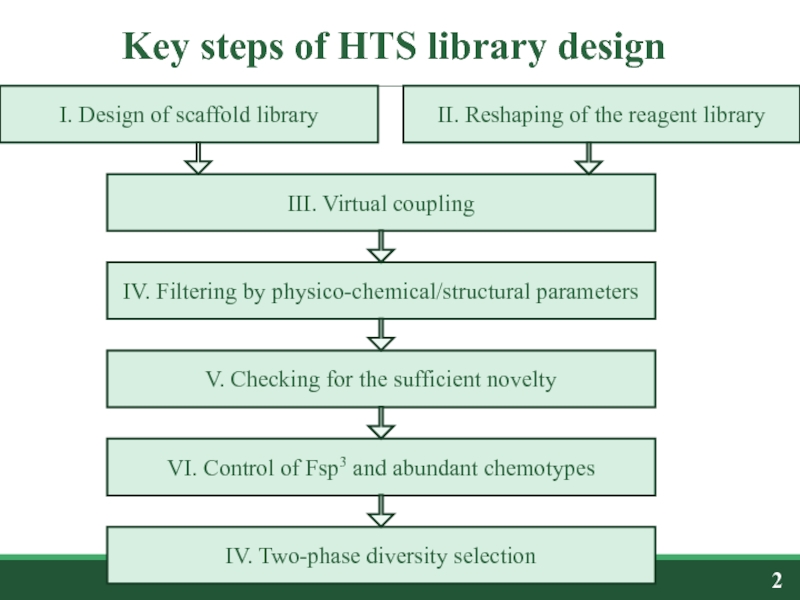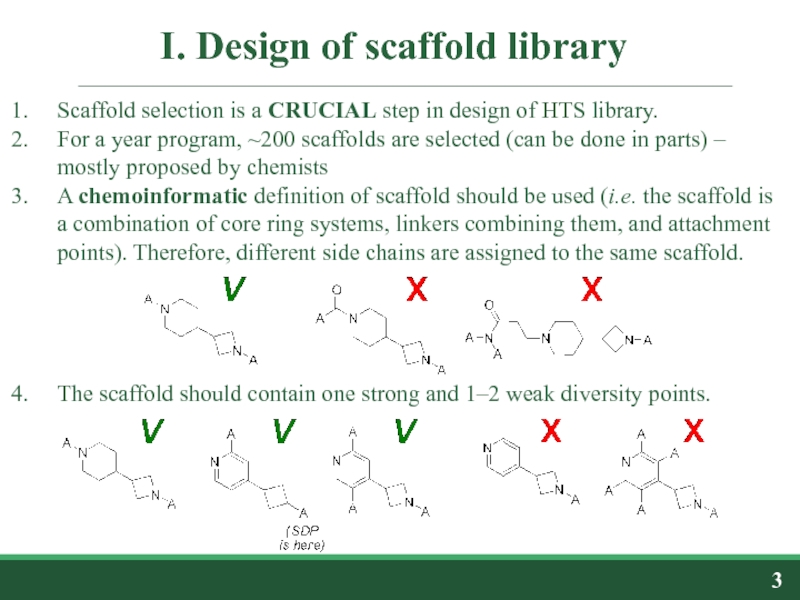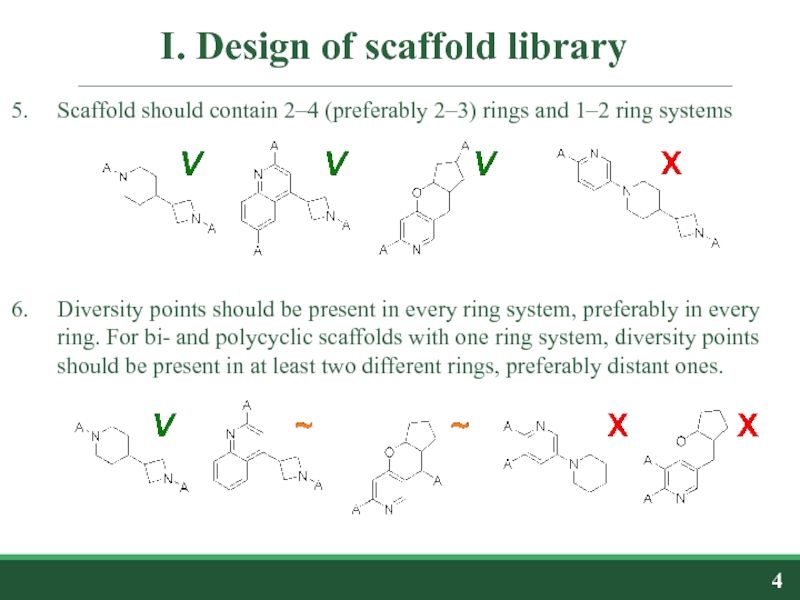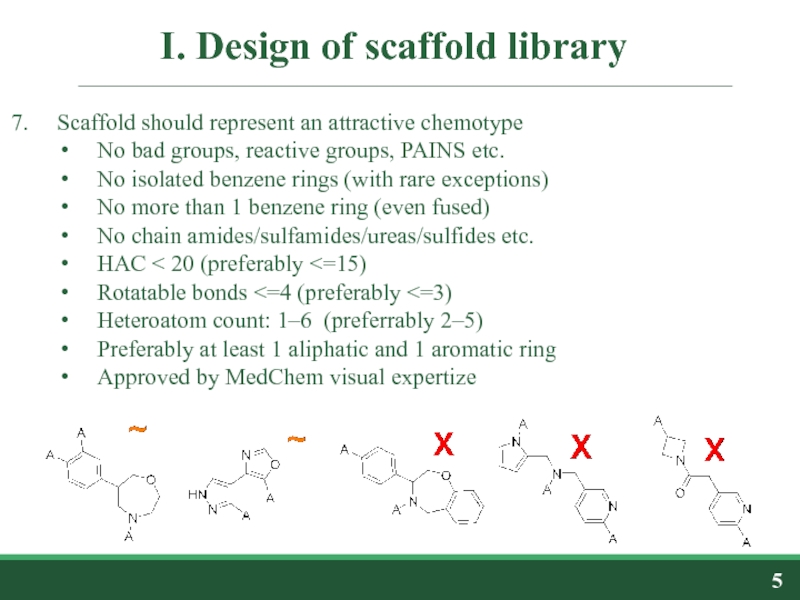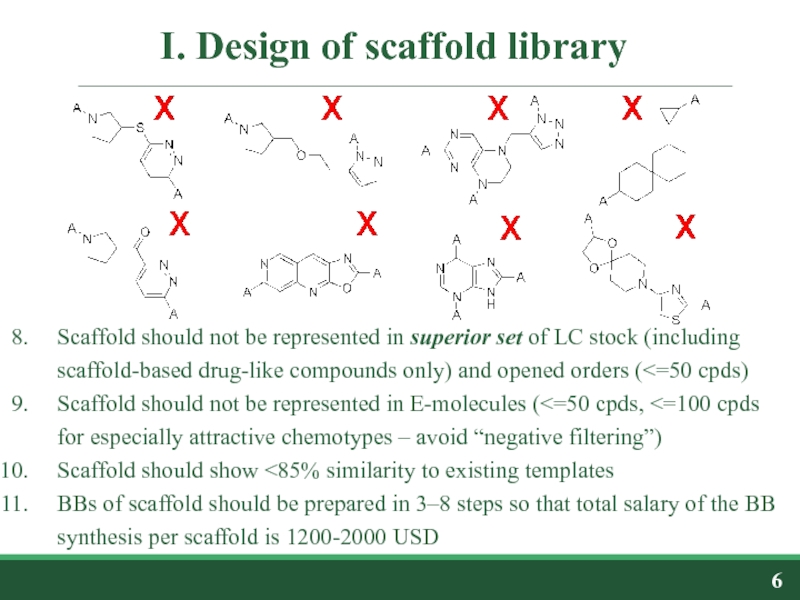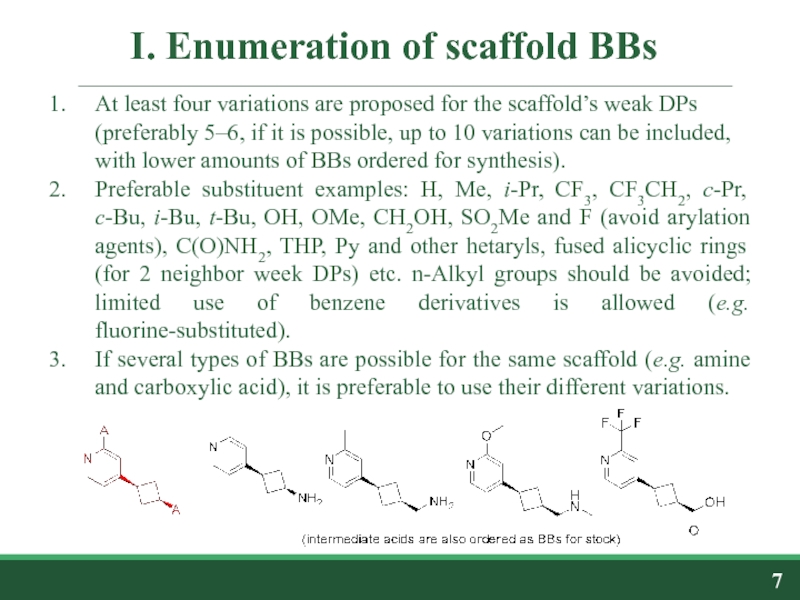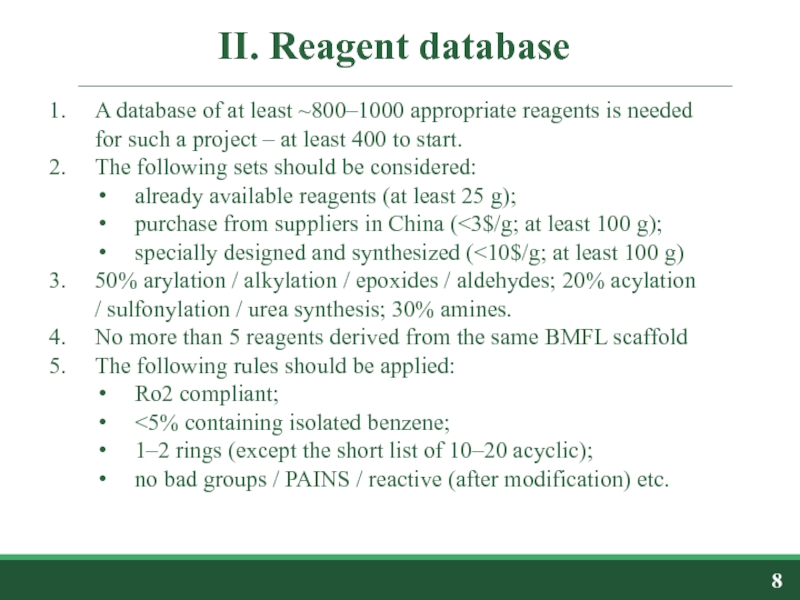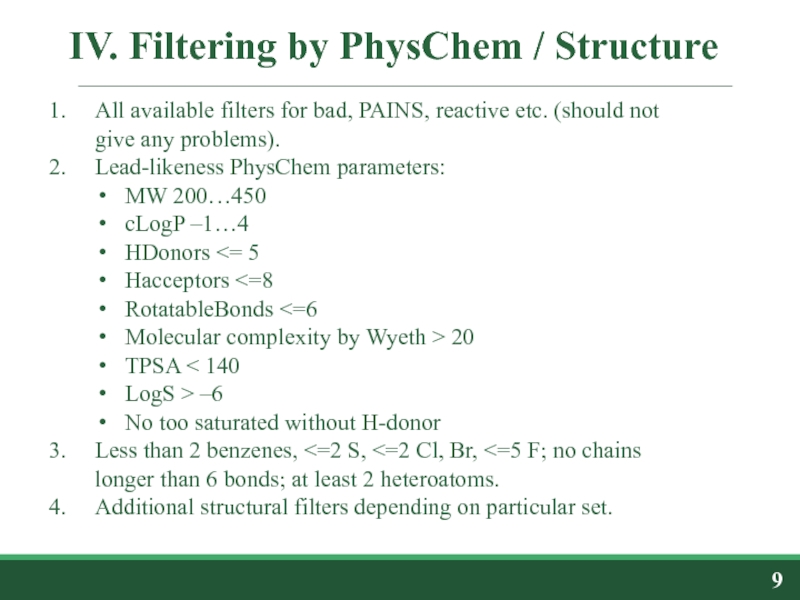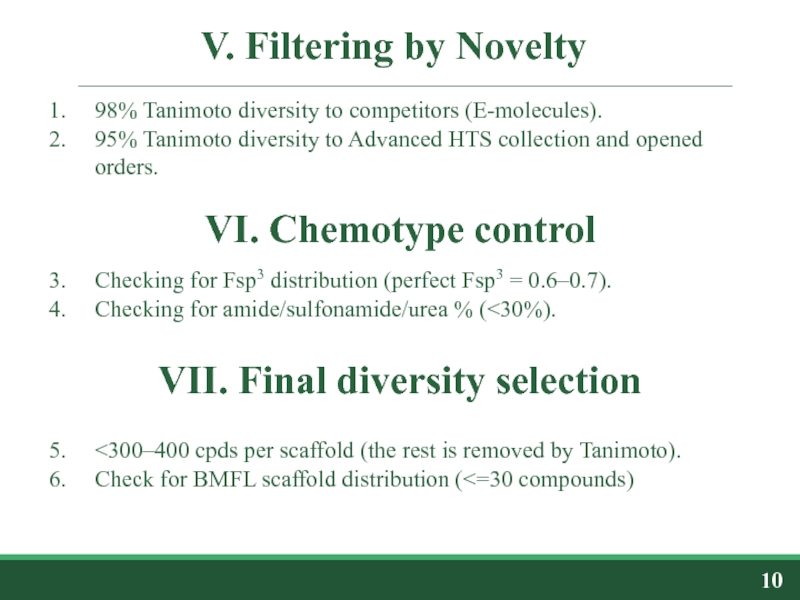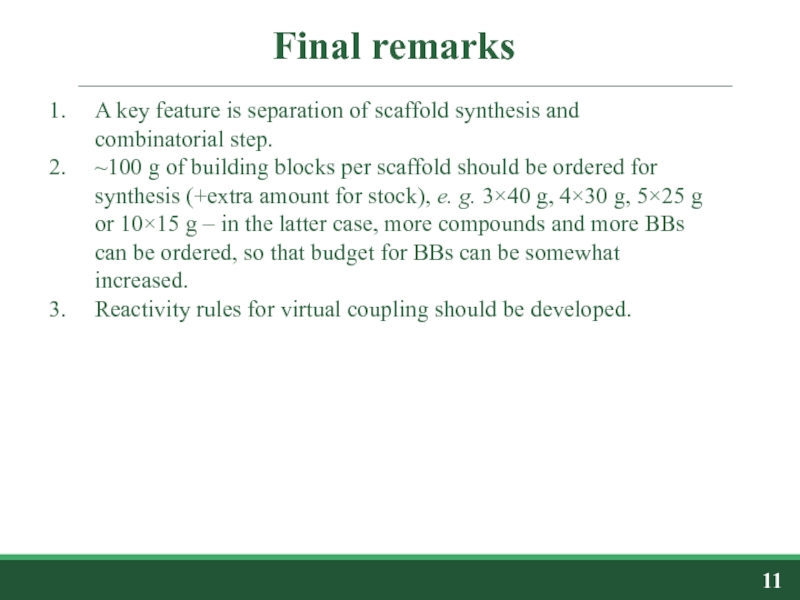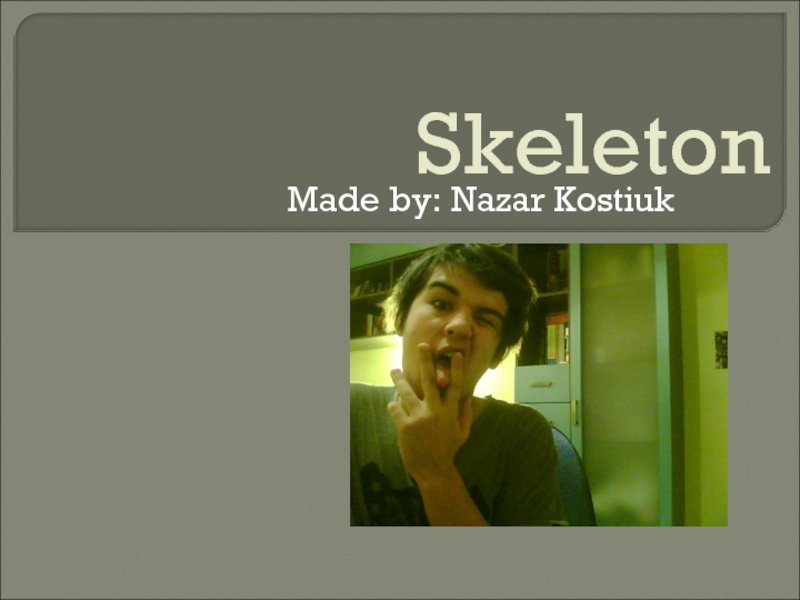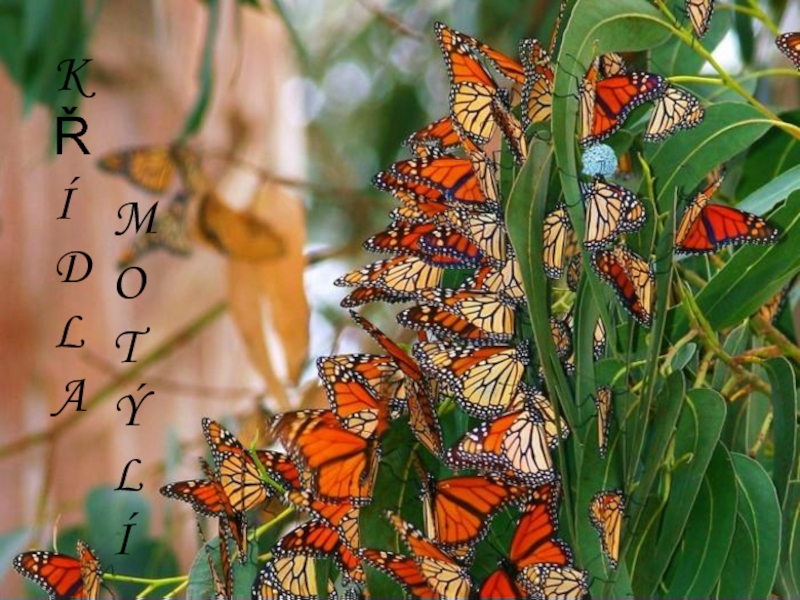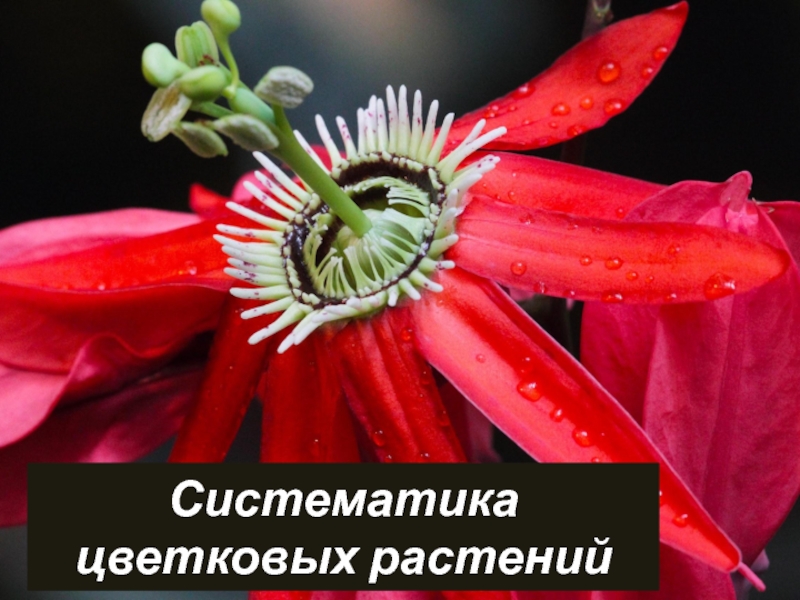- Главная
- Разное
- Дизайн
- Бизнес и предпринимательство
- Аналитика
- Образование
- Развлечения
- Красота и здоровье
- Финансы
- Государство
- Путешествия
- Спорт
- Недвижимость
- Армия
- Графика
- Культурология
- Еда и кулинария
- Лингвистика
- Английский язык
- Астрономия
- Алгебра
- Биология
- География
- Детские презентации
- Информатика
- История
- Литература
- Маркетинг
- Математика
- Медицина
- Менеджмент
- Музыка
- МХК
- Немецкий язык
- ОБЖ
- Обществознание
- Окружающий мир
- Педагогика
- Русский язык
- Технология
- Физика
- Философия
- Химия
- Шаблоны, картинки для презентаций
- Экология
- Экономика
- Юриспруденция
Compound collection enchancement strategy презентация
Содержание
- 1. Compound collection enchancement strategy
- 2. Key steps of HTS library design I.
- 3. I. Design of scaffold library Scaffold selection
- 4. I. Design of scaffold library Scaffold should
- 5. I. Design of scaffold library Scaffold should
- 6. I. Design of scaffold library Scaffold should
- 7. I. Enumeration of scaffold BBs At least
- 8. II. Reagent database A database of at
- 9. IV. Filtering by PhysChem / Structure All
- 10. V. Filtering by Novelty 98% Tanimoto diversity
- 11. Final remarks A key feature is separation
Слайд 2Key steps of HTS library design
I. Design of scaffold library
II.
IV. Two-phase diversity selection
IV. Filtering by physico-chemical/structural parameters
V. Checking for the sufficient novelty
III. Virtual coupling
VI. Control of Fsp3 and abundant chemotypes
Слайд 3I. Design of scaffold library
Scaffold selection is a CRUCIAL step in
For a year program, ~200 scaffolds are selected (can be done in parts) – mostly proposed by chemists
A chemoinformatic definition of scaffold should be used (i.e. the scaffold is a combination of core ring systems, linkers combining them, and attachment points). Therefore, different side chains are assigned to the same scaffold.
The scaffold should contain one strong and 1–2 weak diversity points.
Слайд 4I. Design of scaffold library
Scaffold should contain 2–4 (preferably 2–3) rings
Diversity points should be present in every ring system, preferably in every ring. For bi- and polycyclic scaffolds with one ring system, diversity points should be present in at least two different rings, preferably distant ones.
Слайд 5I. Design of scaffold library
Scaffold should represent an attractive chemotype
No bad
No isolated benzene rings (with rare exceptions)
No more than 1 benzene ring (even fused)
No chain amides/sulfamides/ureas/sulfides etc.
HAC < 20 (preferably <=15)
Rotatable bonds <=4 (preferably <=3)
Heteroatom count: 1–6 (preferrably 2–5)
Preferably at least 1 aliphatic and 1 aromatic ring
Approved by MedChem visual expertize
Слайд 6I. Design of scaffold library
Scaffold should not be represented in superior
Scaffold should not be represented in E-molecules (<=50 cpds, <=100 cpds for especially attractive chemotypes – avoid “negative filtering”)
Scaffold should show <85% similarity to existing templates
BBs of scaffold should be prepared in 3–8 steps so that total salary of the BB synthesis per scaffold is 1200-2000 USD
Слайд 7I. Enumeration of scaffold BBs
At least four variations are proposed for
Preferable substituent examples: H, Me, i-Pr, CF3, CF3CH2, c-Pr, c-Bu, i-Bu, t-Bu, OH, OMe, CH2OH, SO2Me and F (avoid arylation agents), C(O)NH2, THP, Py and other hetaryls, fused alicyclic rings (for 2 neighbor week DPs) etc. n-Alkyl groups should be avoided; limited use of benzene derivatives is allowed (e.g. fluorine-substituted).
If several types of BBs are possible for the same scaffold (e.g. amine and carboxylic acid), it is preferable to use their different variations.
Слайд 8II. Reagent database
A database of at least ~800–1000 appropriate reagents is
The following sets should be considered:
already available reagents (at least 25 g);
purchase from suppliers in China (<3$/g; at least 100 g);
specially designed and synthesized (<10$/g; at least 100 g)
50% arylation / alkylation / epoxides / aldehydes; 20% acylation / sulfonylation / urea synthesis; 30% amines.
No more than 5 reagents derived from the same BMFL scaffold
The following rules should be applied:
Ro2 compliant;
<5% containing isolated benzene;
1–2 rings (except the short list of 10–20 acyclic);
no bad groups / PAINS / reactive (after modification) etc.
Слайд 9IV. Filtering by PhysChem / Structure
All available filters for bad, PAINS,
Lead-likeness PhysChem parameters:
MW 200…450
cLogP –1…4
HDonors <= 5
Hacceptors <=8
RotatableBonds <=6
Molecular complexity by Wyeth > 20
TPSA < 140
LogS > –6
No too saturated without H-donor
Less than 2 benzenes, <=2 S, <=2 Cl, Br, <=5 F; no chains longer than 6 bonds; at least 2 heteroatoms.
Additional structural filters depending on particular set.
Слайд 10V. Filtering by Novelty
98% Tanimoto diversity to competitors (E-molecules).
95% Tanimoto diversity
Checking for Fsp3 distribution (perfect Fsp3 = 0.6–0.7).
Checking for amide/sulfonamide/urea % (<30%).
<300–400 cpds per scaffold (the rest is removed by Tanimoto).
Check for BMFL scaffold distribution (<=30 compounds)
VI. Chemotype control
VII. Final diversity selection
Слайд 11Final remarks
A key feature is separation of scaffold synthesis and combinatorial
~100 g of building blocks per scaffold should be ordered for synthesis (+extra amount for stock), e. g. 3×40 g, 4×30 g, 5×25 g or 10×15 g – in the latter case, more compounds and more BBs can be ordered, so that budget for BBs can be somewhat increased.
Reactivity rules for virtual coupling should be developed.

